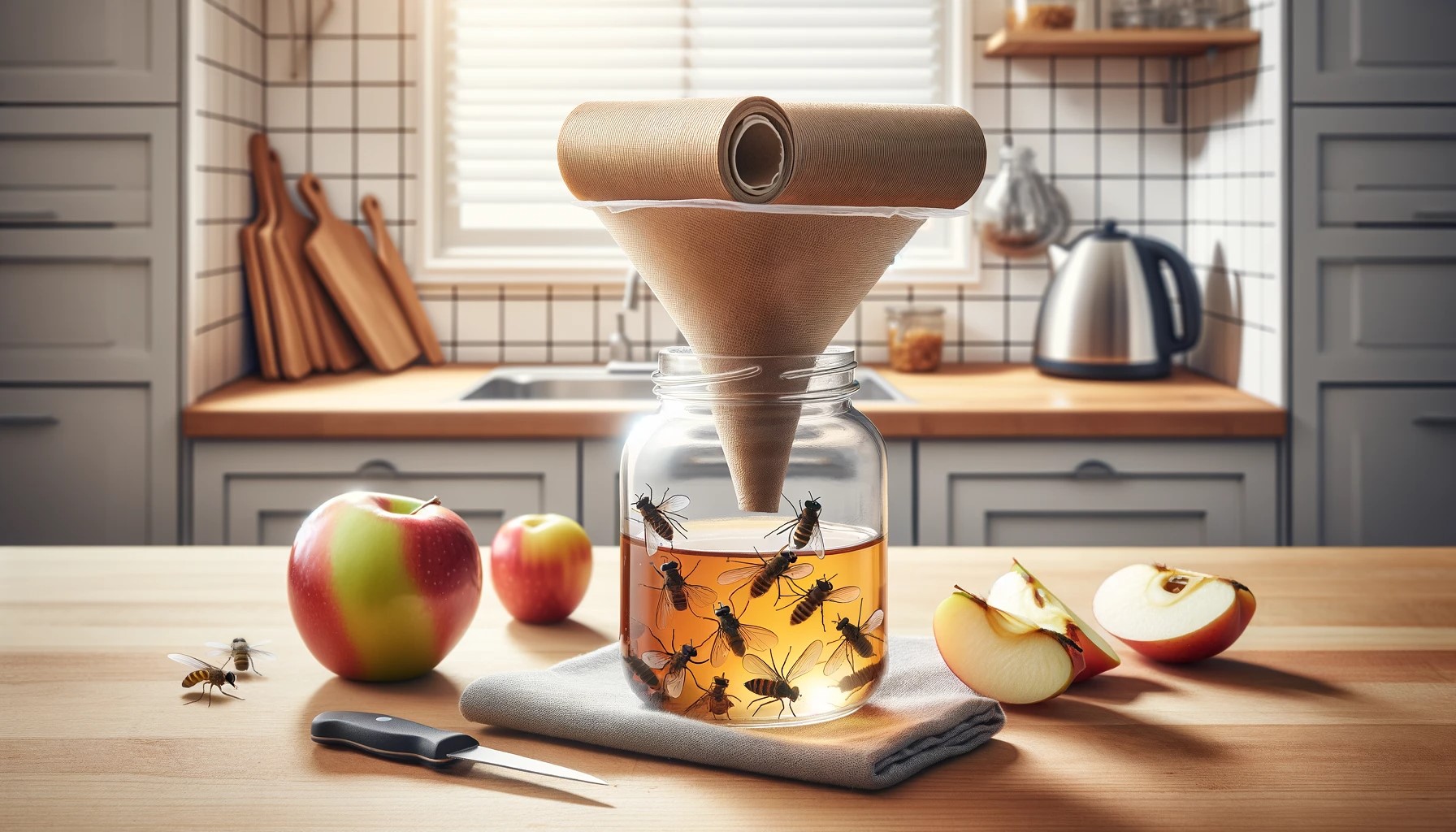Fruit flies can be a persistent nuisance in the kitchen, especially during warmer months when they’re attracted to ripening or fermenting fruits and vegetables. Fortunately, you don’t need to resort to harsh chemicals to get rid of them. A DIY fruit fly trap is an effective, simple, and eco-friendly solution. This guide will walk you through creating your own fruit fly trap using just a few household items.
The Essentials of a DIY Fruit Fly Trap
At its core, a DIY fruit fly trap is designed to lure fruit flies in and prevent them from escaping. This is typically achieved using a container to hold the attractant and a funnel or paper cone to allow the flies to enter but not exit. Here’s how you can make your own:
- Gather Your Materials: You’ll need a container (like a jar or a bowl), plastic wrap or paper to create a funnel, a toothpick or something sharp to poke holes, and bait (fruit, vinegar, or wine).
- Prepare the Bait: Fruit flies are attracted to anything fermented. You can use overripe fruit, apple cider vinegar, or wine as bait. If you’re using vinegar, adding a drop of dish soap can break the surface tension, causing flies to sink and get trapped more easily.
- Set the Trap: Pour the bait into the container. If you’re using plastic wrap, cover the container with it and secure it with a rubber band. Poke small holes in the plastic wrap with a toothpick—big enough for the fruit flies to enter but not so large that they can easily escape. If you’re using paper to create a funnel, roll the paper into a cone shape, place it in the jar with the narrow opening downwards, and tape it so it doesn’t come undone.
Placement and Maintenance
Place your DIY fruit fly trap where you’ve seen the most fruit fly activity. This might be near your fruit bowl, garbage can, or compost bin. Check the trap daily and replace the bait as needed. Once you’ve trapped a significant number of flies, you can dispose of them by submerging the trap in warm, soapy water before cleaning and resetting it.
Why DIY Fruit Fly Traps Work
Fruit flies can’t resist the scent of fermentation, and once they make their way into the trap, they’re not adept at flying back out through the small holes or the narrow part of the funnel. This makes the DIY fruit fly trap an effective method for dealing with these pests.
Conclusion
With just a few simple steps, you can create an effective DIY fruit fly trap to keep those pesky insects at bay. Not only is this method straightforward and eco-friendly, but it also uses items you likely already have in your home, making it a convenient and cost-effective solution.



